Friend.tech without ‘innovation’ gives a lesson on products in the cryptocurrency circle.
Friend.tech teaches a lesson on cryptocurrency products without innovation.When was the last time you saw a dApp being used on your screen? Regardless of whether it’s a so-called ponzi scheme, friend.tech has achieved it.
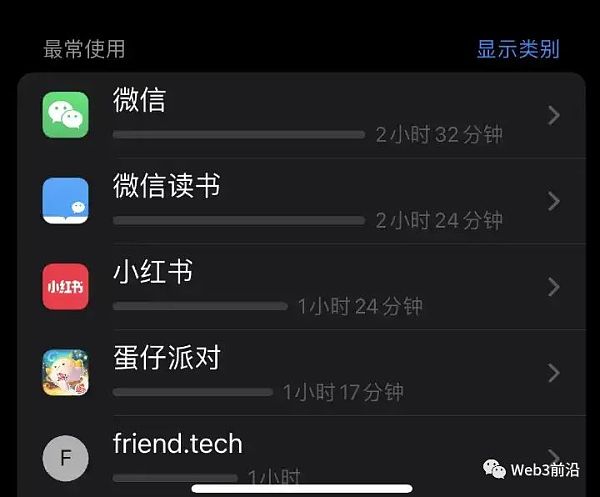
The average weekly usage time of friend.tech is 1 hour, but users mostly choose to use the web version.
Although some people jokingly say that friend.tech (hereinafter referred to as ft) is most powerful in “mobilizing the ability of top KOLs, which is irreplicable.” And the top KOLs, as well as LianGuairadigm, the “golden signboard” in the cryptocurrency industry, have indeed become the engines of ft’s first and second rounds of popularity, but they cannot explain the recent development trend of ft.
- 269% growth in the past 30 days, a comprehensive on-chain analysis of $TRB
- In-depth Analysis of Account Abstraction AA User Growth Data
- Why is Binance in such a hurry to sell its Russian business to a newly launched exchange?
From the data perspective, ft’s development is not instantaneous. The calm period from the end of August to early September not only kept ft away from the public’s attention, but also further reduced the number of speculators.
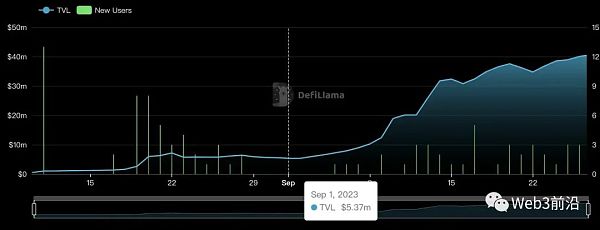
ft’s TVL and new users, data source: DefiLlama
The continuous update and iteration of the product have laid the foundation for ft’s relatively healthy growth in the near future. This round of ft’s expansion has also attracted more DeFi and NFT players. There is even a certain degree of out-of-the-box effect, with some YouTube influencers, OnlyFans managers, authors, internet industry practitioners, VCs, and other groups joining ft. Even on September 22nd, when ft reduced the points rewards for self-purchasing users, it still couldn’t hide the market’s enthusiasm, and ft’s Total Value Locked (TVL) reached a new high.

On September 28, 2023, ft’s product goes online for about 49 days, and the team’s transaction fee income is about 15 million US dollars.
From the perspective of social products, ft’s data is also impressive. According to the official data released, ft has a next-day retention rate of over 75% and a weekly retention rate of over 50%, which means the product has strong stickiness and users are still using it extensively. At the same time, the average daily usage time of active key holders for FriendsTech exceeds 30 minutes.

Although some netizens joked that 27 minutes were spent on refreshing the page, it seems that ft has recently strengthened its server performance, resulting in a significant improvement in user experience compared to when it was first launched.
For the long-term development of the entire industry, the focus is not solely on friend.tech itself, nor on its ponzi design and wealth effect. The real significance of ft is to tell the market that through existing technologies, we can build impressive products. Even though the product is still in its early stages, it can demonstrate the potential to become a consumer-grade product through creativity and mature operational methods.
Even if ft is not successful, the PWA technology that bypasses the Apple tax, the login method that does not require mnemonic words, the L2 low-cost interaction method, and the optimized transaction matching form it uses can tell the aspiring founders and developers that there are still many possibilities even without creating a new public chain and zk.
Each of the mentioned technologies is not original to ft. As Henry Ford said, “I didn’t invent anything new, I just assembled the inventions of others over hundreds of years into an automobile.”
This article does not aim to explore whether ft is the Uniswap moment for social. Instead, it will analyze the protocols and infrastructure used by ft, starting from the first step of the login interface, based on the social platform of friend.tech and known information. If there are any protocols not covered, readers are welcome to inform us for supplementation.
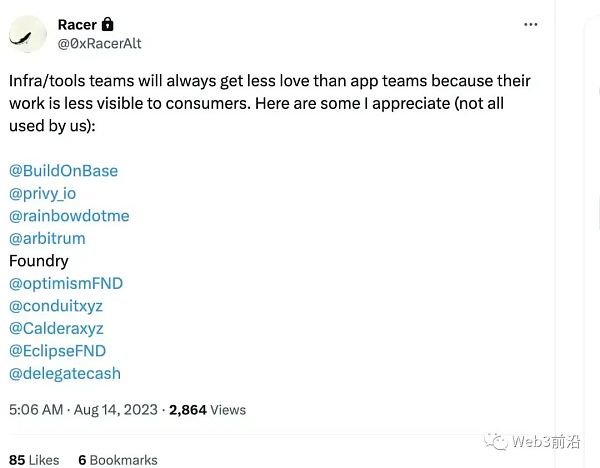
Stack 1: PWA
Not only tightly integrating with Twitter, ft’s initial product also tightly integrated an old technology – PWA (Progressive Web App).
Although called an old technology, it has not been a year since it met the needs of ft’s push. According to Dan Romero, the founder of Farcaster, Safari’s update in version 16.4 (released in 2023) strengthened support for PWA, allowing users to more reliably receive ft’s message push.
In general, PWA is still a web application, but by providing standard frameworks on mobile devices, it achieves a user experience similar to native applications in web applications. This includes message push, background loading, offline use, native application interface (similar UI and UX to native applications), and desktop icons.
PWA is no longer a novelty for many developers. In foreign countries, Twitter in the era of Jack Dorsey has long supported PWA, and many platforms in China, such as Weibo and Minority Report, also support PWA, with excellent user experience. Even in the cryptocurrency circle, projects such as Coinbase, Orca, and LianGuaincakeSwap all support PWA applications. Like ft, many DEXs also support jumping to mobile-native wallets such as MetaMask to complete authorization.
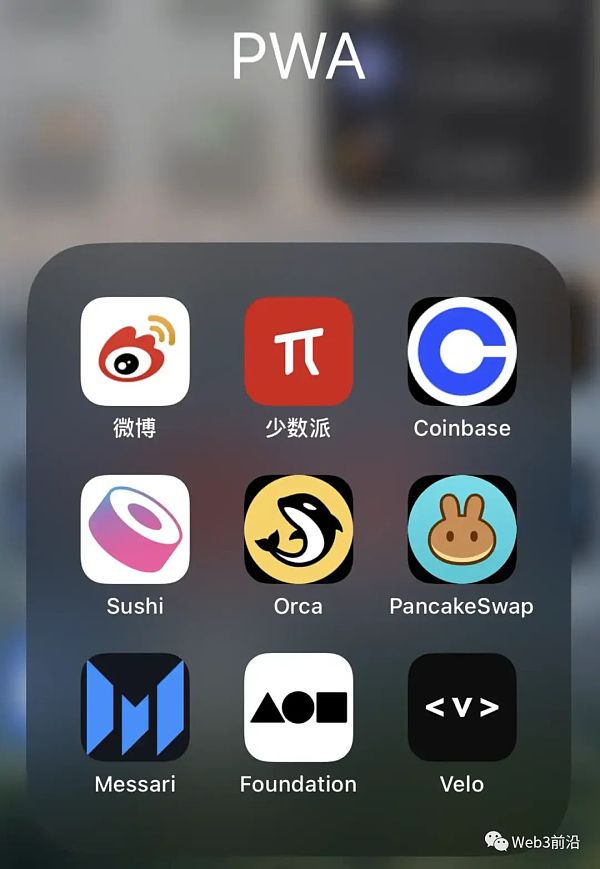
Protocols and websites that support PWA
For the cryptocurrency circle, PWA technology also means bypassing the regulation of various app stores and the 30% revenue share of the Apple Store. I don’t know if you still remember, a few years ago, Epic and Apple had a big argument about the “Apple tax” issue in Fortnite. While Apple and several game giants were arguing about the “Apple tax”, Amazon’s cloud gaming service Luna cleverly chose the PWA mode to bypass Apple Store’s regulation.
Through communication with some developers, I learned that even without considering the “Apple tax”, the overall cost of launching PWA is lower than that of launching on app stores, and the operational cost for the same user volume is also lower. After ft successfully attracted enough attention by using PWA technology this time, PWA may become an important implementation path for products in the cryptocurrency industry.
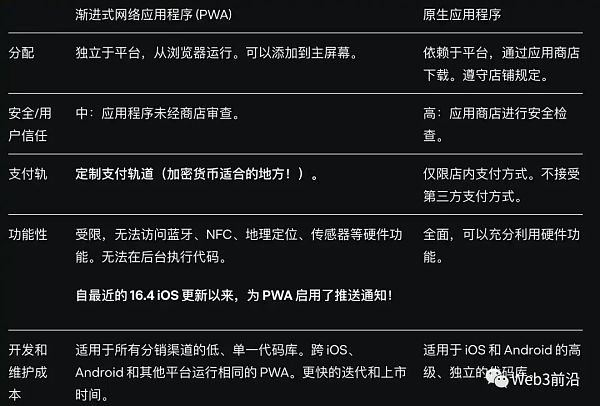
Source: Delphi Digital
At the same time, PWA technology is also a major driving factor for the fast iteration and continuous addition of new features after the launch of ft.
Stack 2: Privy – Embedded Wallet
After “download” is completed, ft did not choose the traditional way of encrypting users (downloading wallets, saving mnemonic phrases, switching networks, connecting wallets to applications, etc.), but created a new self-hosted wallet for users through Google accounts and Apple IDs, avoiding the experience of saving mnemonic phrases or private keys, simplifying the entry process, and weakening the encryption attributes of the product.
Here, ft chooses the embedded wallet of Privy to achieve the same experience as many mainstream login methods in China and abroad – logging in with mainstream platform accounts such as WeChat, QQ, or Google.
If you think that this embedded implementation method is optional, then you can imagine another version of ft: download the MetaMask wallet, connect with MetaMask, and then connect Twitter to the account. Every time you want to buy a key from someone else on the application, you have to jump to MetaMask, sign the transaction, and then return to the application. In this user experience, ft is basically excluded from all traditional users.
Using an embedded wallet is not a betrayal of encryption. Privy CEO Henri Stern said that in fact, it is just a very good alternative for certain application experiences – it can put traditional internet users who log in with email and native encryption users on the same starting line.
According to Privy’s introduction, the embedded wallet uses MPC technology and is implemented through Shamir Secret Sharing: the wallet’s secure data is divided into N parts, and M parts can be used to recover it. Currently, Privy allocates three parts of the wallet’s secure data, and two parts can access the account when combined.
The ultimate result achieved by the embedded wallet is that Privy cannot reconstruct the mnemonic phrase and access the user’s private key separately, and the user can access their private key at any time without going through Privy. Both friend.tech and Privy cannot access the user’s private key, but the user can have full access to the cryptocurrency wallet.
However, 0xngmi, the founder of DefiLlama, also stated on social media that “currently friend.tech stores the user’s keys on the frontend, making it vulnerable to attacks.” However, the embedded wallet of Privy was launched in March 2023 and is still updating its product. For example, it recently added a password recovery feature. In the near future, the newly criticized issue of new addresses may be resolved, and even hardware wallets may be integrated with ft in some way. Luodong will continue to pay attention to the technical updates of embedded wallets and consumer-grade encryption products.
Stack 3: RaaS-Base, (Rollup as a Service)
After completing account registration and login, and binding Twitter, inject Ethereum into the newly created wallet (including options for the main network and Base), and transfer Ethereum in the Base chain of the account. The Ethereum in the Base chain is the only and universal currency of ft. Thanks to the fact that every transaction occurs on the Base chain, the transaction fees for ft users are extremely low.
From the popularity of Base’s launch, it can be seen that the market is gradually transforming the fact of “one-click token issuance” into the expectation of “one-click chain issuance” (RaaS, Rollup as a Service) narrative. Based on the OP Stack, Base has even surpassed Optimism in certain data. Summarizing the narratives of major institutions and media in the past, OP Stack has features such as shared security, powerful functionality, low cost, and open source. Using RaaS can greatly avoid the prevalent problem of “reinventing the wheel” in the cryptocurrency industry and reduce fragmentation.

Recently, Base has surpassed Optimism in both user numbers and transaction volume, data source: DefiLlama
In the future, with the launch of more RaaS protocols such as Conduit, Caldera, and Eclipse, one-click deployment of L2 may quickly become accessible to the general public.
Stack 4: bonding curve
Racer, the founder of ft, seems to have a special interest in DeFi. In her previous image social sharing product, Stealcam, she introduced an automatic trading matching mechanism, gradually increasing the price of Stealcam’s rights to open images by 10% plus 0.001 ETH, while also paying a certain protocol income to the creators.
In ft, Racer directly builds all transactions on the bonding curve, without any external LP (Liquidity Provider), naturally forming a medium of exchange between participants in each Room. The price of each Room and Key is rational and traceable. The simple and transparent calculation method avoids complicated calculations and transaction vulnerabilities.
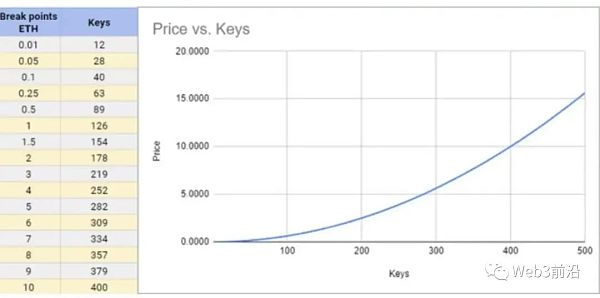
Bonding curve for ft key
Of course, many users are discussing the phenomenon of the current high price of the key under the bonding curve, which may affect the willingness of potential participants to pay, and it may also be a problem that the ft team needs to face and solve.
Stack 5: Others
Even though everything in ft comes from smart contracts on the Base chain (users can interact with ft through other front-ends), it seems that everyone believes that ft is a Web 2.5 product.
For example, PWA itself is a technology that relies on centralized servers. The chat content in each Room in ft is completely centralized and is not encrypted or stored on decentralized storage protocols such as IPFS or Ar. Moreover, user addresses and Twitter user information are strongly linked, which some users see as a kind of vampire attack or parasitism.
However, a series of derivative activities triggered by ft are all based on smart contracts. For example, the previously occurred memory pool leak incident, which allowed bots to purchase a large number of new user keys in the same block. And the various bots and derivatives launched based on web or TG bot, as well as future behaviors and activities such as voting and NFT distribution based on keys, are all based on on-chain data.
In the journey towards mass adoption and consumer-level applications, controversies about decentralization in the crypto world will certainly not be in short supply. But as mentioned in an article by Privy, today’s Web3 is oriented towards users, not just experts.
Inspiration
To some extent, friend.tech does resemble more traditional Internet products, as evidenced by the frequency of adjustments to the product and rules: fast iteration and low cost.
Product Iteration
The speed of ft’s product iteration undoubtedly surpasses the average standard of the cryptocurrency industry. This can be most directly felt from the navigation bar at the bottom of the product. The initial version of ft had only three options: home, explore, and airdrop. Now, there are five options: home, following list, chat, explore, and airdrop. In short, ft is more like a product now.
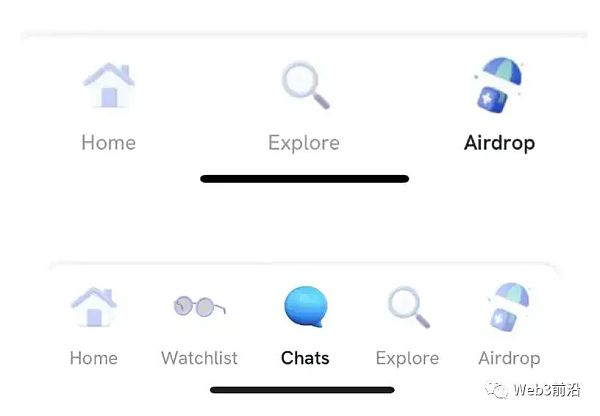
Comparison of ft features, the top part is the initial version, and the bottom part is the version after multiple iterations.
Loongdong has also organized the updates announced by ft to present the updates and frequency of the product in a more intuitive way. If it is true, as rumored in the community, that the ft team only has three members, the update frequency of this product is enough to surprise many users in the cryptocurrency circle.
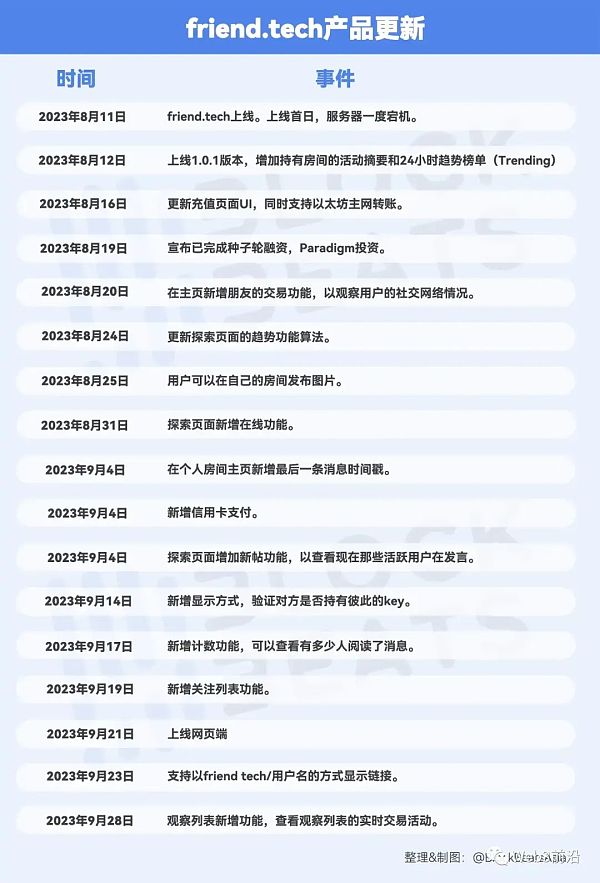
Precise Operation
Since airdrop hunters have become the main users of the cryptocurrency industry, the game between project parties and witch attacks has become a focus. The black box and high-frequency adjustments in the scoring rules of ft do not seem to have triggered widespread centralized discussions in the community. Many users even express their support.
Fast iteration is difficult to achieve in the code is law of smart contracts, but ft’s contract only fixes the transaction layer, while the scoring and product functions are at the data layer. How to adjust the variable rules to attract more users, reduce vulnerabilities, stimulate user vitality, and achieve the goal of promoting high-quality growth of smart contract data? Centralized adjustments are undoubtedly a good solution.
As well-known by users, traditional Internet products need to explore the appropriate PMF (Product Market Fit) through a large amount of internal data analysis, research, and AB experiments.
The ft team also has a well-structured marketing strategy. For example, in the product launch, the first wave of heat came from the wide-ranging cold start under the promotion of KOLs, impacting the majority of cryptocurrency users. When the momentum of the product’s rise weakened, the announcement of LianGuairadigm financing by ft added endorsement to its product and also attracted a wide range of short hunters and more interested institutions. At the same time, the ft team made dynamic adjustments to the product, catering not only to the (3,3) strategy of the ft community, providing assistance for mutual purchases, but also greatly weakening the points of self-purchasers.
Wang Huiwen, co-founder of Meituan, mentioned in his product course that at the abstract level, humans love innovation, but at the concrete level, humans fear innovation.
In fact, most successful cases today are not the first products in their industries. It is hoped that the emergence of friend.tech can inspire more new ideas and creative products within the industry, and look forward to the emergence of more consumer-grade applications in the cryptocurrency field.
We will continue to update Blocking; if you have any questions or suggestions, please contact us!
Was this article helpful?
93 out of 132 found this helpful
Related articles
- Is the recent court ruling an intentional attempt by the judicial department to balance the scales of SEC regulation?
- Friend.tech without innovation has brought a product lesson to the cryptocurrency circle.
- Namada in Detail A Modular Privacy Solution for Multi-chain Ecosystems
- How do lawyers use AIGC to write articles? Taking Microsoft Copilot as an example.
- Thoughts on Friendtech Not optimistic about all Friendtech clones.
- NFT quietly integrates into the mainstream Fat Penguin settles in Walmart, Microsoft Xbox may integrate encrypted wallets.
- LianGuai Morning Post | 3 more people arrested in JPEX case, bringing the total number of arrests to 15.






